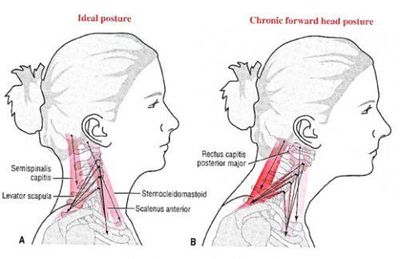Balance
Proprioception is an important bodily neuromuscular sense. It falls under our “sixth sense”, more commonly known as somatosensation. The term somatosensation is an all-encompassing term which includes the sub-categories of mechanoreception (vibration, pressure, and discriminatory touch), thermoreceptor (temperature), nociception (pain), equilibrioception (balance) and proprioception (sense of positioning and movement). The feedback from all these different sensory components arise from our PNS feeding information to our CNS, both at the level of the spinal cord (reflexive) and sent to the cerebral cortex for higher processing. People experiencing proprioceptive challenges are coming to chiropractic clinics with conditions related to MVAs, sports injuries, falls, developmental, or neurological issues.
Proprioception is the perception of body position and movements in three-dimensional space, and overall proprioceptive performance is determined by the quality of both the available proprioceptive information and an individual’s proprioceptive ability. Thus, the hardware (peripheral mechanoreceptors) provides proprioceptive information to the brain for the software (central processing) to integrate and use.
ANTERIOR HEAD CARRIAGE

Anterior Head Carriage
ANTERIOR HEAD CARRIAGE IS WHEN THE HEAD IS FURTHER FORWARD THAN NORMAL.
Anterior head carriage. – Forward head posture increases the workload for many of the muscles attached to the cervical spine, which has the job of holding up the head. Over time, forward head posture can lead to muscle imbalances as the body tries to adapt and find efficient ways to hold the head up for straight-ahead vision. Some muscles become elongated and weakened, whereas other muscles become shorter and tighter.
Common muscles that elongate and weaken due to long-term forward head posture include:
-
DEEP CERVICAL FLEXORS.
These muscles, also called the longus capitus and longus colli, are located along the front of the cervical spine and help stabilize the neck. When weakened, the deep cervical flexors lengthen as the chin tilts away from the neck, often called “chin poking.”
-
ERECTOR SPINAE
(lower cervical and upper thoracic).
These are extensor muscles attached to the back of the lower cervical spine and upper thoracic spine. The erector spinae play a key role in rotating and straightening the spine. When the erector spinae muscles lengthen and lose strength, they are less capable of keeping the neck and upper back from hunching forward.
-
SHOULDER BLADE RETRACTORS.
The middle trapezius and rhomboid muscles in the upper back help bring the scapulae (shoulder blades) backward to keep the shoulders back and chest open in good posture. Weakened trapezius and rhomboid muscles allow the shoulder blades to tilt forward, further contributing to hunched shoulders and forward head posture.
When trying to correct forward head posture and relieve neck pain, these are muscles that may need to be targeted for strengthening. Also, other muscles may also need to be strengthened to help reduce forward head and rounded shoulder posture, depending on the patient’s specific needs.
These are the muscles that commonly shorten and tighten due to long-term forward head
- Suboccipital muscles. These 4 pairs of small muscles, which connect the lower back of the skull to the top of the cervical spine, help with head rotation and extension. These posture muscles work extra hard and continually contract to keep the head tilted up and looking straight ahead during forward head posture.
- Chest muscles. As the muscles in the upper back tend to become elongated as the shoulder round forward, chest muscles may become shortened and tight. An example includes the pectoralis minor muscles, which are a pair of thin triangular muscles in the upper part of the chest.
- Levator scapulae muscles. This pair of muscles is located along the back and side of the neck, traveling from the upper cervical spine down to the shoulder blade (scapula). The levator scapulae plays a key role in lifting or elevating the scapula, in addition to helping with various neck movements. If the shoulder blade starts to tilt forward and rotate up with rounded shoulders, the levator scapulae muscles may become shortened.
These muscles are commonly the focus of stretches to help reduce neck pain and improve forward head posture. Numerous other muscles may become shortened or lengthened due to forward head posture, and the specific muscle imbalances can vary depending on the case.
